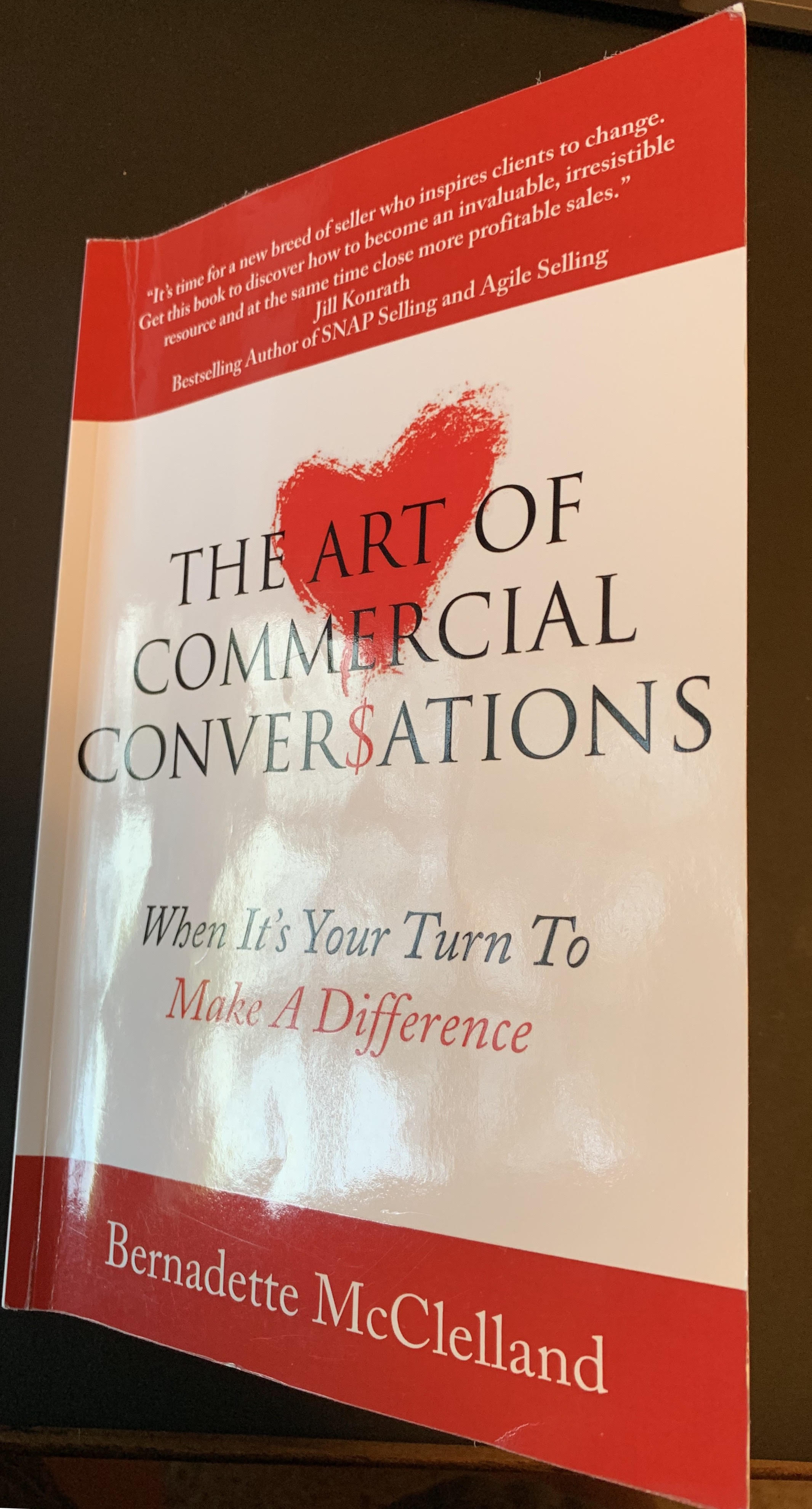The Power of Talk: How Quality Conversations Drive Business Success
The art of conversation is as old as human civilization. Yet, as business dynamics evolve, effective communication becomes even more paramount. This article will delve into the fascinating realm of “conversational intelligence” and why having meaningful conversations can be a game-changer for businesses.
Understanding Conversational Intelligence
Conversational Intelligence, in its essence, is the ability to effectively engage in conversations in a manner that creates a shared understanding, builds trust, and fosters meaningful connections. It’s not merely about talking but instead creating a mutual narrative.
While standard communication is about conveying messages, conversational Intelligence digs deeper. It’s about understanding the other party’s perspective, connecting on a deeper level, and co-creating solutions.
Key components of conversational Intelligence
- Active listening: This is about being genuinely interested in what the other person is saying rather than just waiting for your turn to talk.
- Empathy: Understanding and sharing another person’s feelings, trying to see the world from their perspective.
- Clarity: It ensures your message is easily understood without jargon or ambiguity.
- Authenticity: Genuine interactions where parties are natural, open, and honest with each other.
The Link Between Conversational Intelligence and Revenue
Conversational Intelligence doesn’t just foster good vibes; it directly impacts a business’s bottom line. At the heart of this is the weight of first impressions. Within mere seconds of interaction, decisions about trustworthiness, competence, and likability are being formed. These snap judgments can significantly sway business decisions, making the initial phase of any conversation crucial. But it doesn’t stop there.
Building trust through effective communication is an ongoing endeavor. When businesses communicate transparently and consistently, clients and partners feel more secure, leading to smoother transactions and long-term loyalty. Diving deeper into the psychology behind purchases, emotions play an outsized role. A conversation that resonates on an emotional level can significantly influence purchasing decisions. Thus, harnessing conversational Intelligence isn’t just about pleasant dialogues; it’s a strategic tool for revenue growth.
However, as we engage with sales teams globally, we consistently find many salespeople need help to have conversations that lead to revenue. Here, we discuss the opening discussions and skills that establish trust and competence early. The skills to identify who might be their ideal customers and engage them in conversations. This also includes engaging current customers in discussions to identify new opportunities to serve them.
We are finding that more salespeople today lack skills like building rapport, building trust, creating business relationships, discovery, and qualifying skills. When these skills are lacking, your salespeople are not having conversations. They have one-way presentations or “pitch slapping” your customers and prospects.
Strategies for Cultivating Conversational Intelligence
To truly grasp the depth and potential of conversational Intelligence, one must delve into the strategies that accentuate its power.
Building Rapport
The foundation lies in building rapport. Imagine entering a room with a familiar face; the conversation often flows effortlessly. That’s the power of connection. We can establish this camaraderie in a business by initiating dialogues with personal anecdotes, humor, or genuine interest in someone’s weekend plans. It forms a friendly preamble to weightier discussions. As I shared in my book Driving Explosive Growth, rapport sets the stage for trust and future talks. We are H2H selling. ( Human to Human) The conversation typically escalates if the other person feels you genuinely have an interest in them, their business, and a desire to help them. If the other person does not feel worthy intent to serve them, the conversation will often end abruptly.
Questioning Techniques
Equally significant is the art of questioning. The questions we pose can determine the depth of understanding we attain. As I share in my sales training and coaching, the very nature of your questions helps to establish trust and build competence. Open-ended questions, like “What challenges did you face during this project?” entice detailed responses, painting a fuller picture. Meanwhile, probing questions act as deep dives into specific areas. Asking, “How did that particular challenge affect your delivery timelines?” can unveil intricate details. As we develop sales discovery and qualifying skills, we focus on asking “How” and “What” questions. For years, sales teams have been trained in what is referred to as the “five whys.” The five whys aimed to help your salespeople gain a deeper, more intimate understanding of the challenges your customers face and gather insights that will be used in a value-based business case to engage with the salesperson based on the value they will deliver. “Why “questions create an internal negative emotional response in customers. Why did that happen? Why did your team allow that to occur? If the customer feels attacked or anxious, the creative part of their brain turns off, and they move into a primal flight or flight mode. Unfortunately, salespeople often experience buyer flight, and the conversation ends and never develops into ways they can serve the customer.
Lastly, reflective questions serve as mirrors. When we reiterate, “So, if I understand correctly, the challenge delayed your project by a week?“ it confirms our understanding and assures the other party that we’re truly listening. From helping sales teams for just under 40 years, one common challenge I see is salespeople listen to reply and not listen to learn. In our active listening courses and courses on discovery and qualifying, we help salespeople listen to understand. We also teach salespeople to listen for changes in the other person’s conversation pace, tone, and word choices as indicators to serve the customer better. In our buyer personality courses, we help salespeople identify the buyer’s personality type and how to converse about that style’s values.
Nonverbal communication
Remember that sometimes, silence speaks louder than words in the realm of non-verbal cues. A client’s subtle shift in posture, a fleeting uneasy glance, or a reserved tone can provide profound insights. These cues, often overlooked, can be the difference between aligning with a client’s actual needs and missing the mark. Post-pandemic, many meetings are occurring virtually with web-based video technology. Salespeople must understand virtual body language and adjust the conversations.
Feedback Loops
Lastly, feedback loops act as checkpoints. Concluding conversations with summaries ensures everyone leaves with aligned perspectives and clear action items. Who is doing what, and by when? Please tell me the following steps and when they will happen. What would you need to do to engage further? Do you have any questions we need to answer before we get together? Is there anyone else we need to bring into this conversation, and when? What does the customer need next? What does the salesperson need next? What will this journey of working together look like? Answering all these questions and more continues to build trust and competence in the salesperson.
Applying Conversational Techniques to Drive Revenue and Increase Gross Margins
Conversational techniques are more than just soft skills; they’re powerful tools to boost revenue.
Sales conversations: not just about the product
In the sales world, the conversation should rarely be about the product. Unfortunately, untrained salespeople lead with features and benefits and rarely, if ever, identify problems their customers and prospects must solve. Sales dialogues are intricate dances where understanding clients’ needs and pain points takes center stage. Instead of rattling off product features, astute salespeople weave stories that position their offerings as solutions, creating a vivid picture of how their product or service can enhance the client’s world.
Handling objections through empathetic conversation
When clients voice concerns or objections, it’s essential to lean into empathetic conversation. Instead of viewing objections as barriers, view them as opportunities to clarify, align, and deepen the client relationship. In our training on handling and not overcoming objections, I ask a simple question: “Do you want to win the argument or feed your family?” By addressing concerns with genuine understanding, salespeople can often turn apprehensions into points of agreement. Salespeople who have a low, close rate rarely identify and handle objections as they occur. As a result, they make presentations and quotes that rarely have the opportunity of closing and turning into profitable revenue.
Upselling and cross-selling using conversational cues
Then, there’s the arena of upselling and cross-selling. With sharp conversational Intelligence, one can pick up cues suggesting a client might benefit from additional products or services. This isn’t about pushing more to sell but about genuinely enhancing value. Often, clients self-diagnose, research, and have conversations with salespeople about price and delivery. Studies now indicate that 33% of buyers would prefer to do their research and not engage with a salesperson. Research also shows over 80% of the sales process is over by the time a buyer engages with a salesperson.
Unlike the 1990s, when buyers had to meet with salespeople as part of their research, today, buyers can often find answers to their challenges in one or two clicks. But are they the correct answers? Top performing salespeople today always seek to understand. Poor-performing people in sales roles are transactional.
Let me share an example from training one of my distributors….
The CEO and leadership team of an industrial supplies distributor were concerned. Their gross margins were lower than usual, failing to hit some of their rebate dollar thresholds. They asked for our help. We assessed their entire sales team and found over 70% of their salespeople were transactional. In other words, if a customer called and said I need to buy 10 QR33479 T’s, they entered the order into the system and gave the customer a future ship date. A few asked if there was anything else. However, their top-performing salespeople asked questions like…We are happy to help you. Can I ask what the application for this part is? How do you plan to use it? What is the environment? What is the cycle time? Will you need us to install it, or have your team been trained?
Buyers doing research do the best they can. However, they often misdiagnose the problem and make buying decisions based on price and availability only to have the problem reoccur or, in some cases, cause more significant issues.
We trained the sales team to conduct conversations that lead to revenue. We taught the team to ask great questions that build trust, demonstrate competence, and ensure the customer has the best possible experience.
Working with the product teams, we also helped salespeople understand other products and services often purchased with what buyers are asking for. Adding these other products increased revenue, the blended gross margins were greater, and their customer satisfaction scores increased by 12%.
Fostering customer loyalty through meaningful interactions
Lastly, fostering customer loyalty goes beyond the initial sale. By continually engaging in meaningful interactions, businesses can cultivate a bond with customers, ensuring they repeatedly return, transforming one-time buyers into brand ambassadors.
Here, we help “sales reps” become “trusted advisors” to customers and prospects. As we share in the courses …you know you are delivering value when the buyer says…you are the only salesperson who asked me that question, and I need to consider that.
Becoming a trusted advisor, a business consultant masquerading as a salesperson happens with each conversation.
Salespeople must develop the conversational intelligence their buyers and prospects value.
Common Pitfalls and How to Avoid Them
Effective communication is as much about avoiding mistakes as it is about executing strategies.
Dominating the conversation
One of the most prevalent pitfalls in business conversations is dominating the conversation. There’s a tendency, especially when passionate or well-informed about a topic or product, to overpower the dialogue. However, communication should be a two-way street. If you’re always talking, you’re likely missing out on essential insights the other person could provide. The solution? Practice active listening, give others the floor, and ask open-ended questions to encourage participation. When we coach salespeople, we want to see a customer conversation ratio of the customer talking over 70% of the time. This can only occur if salespeople are equipped with excellent questions and practice active listening.
Making assumptions
Another trap professionals often fall into is making assumptions. ( And we know what happens when we assume right) Beliefs act like blind spots. For instance, taking a client who understands an industry jargon or acronym can lead to confusion or misinformed decisions. It’s vital to approach each conversation with an open mind, seeking to understand before being understood. Clarifying points and reiterating shared information can curb the risks associated with assumptions.
Information Overload
In today’s data-driven world, there’s also a tendency to overload information. While presenting facts and figures might seem impressive, it can overwhelm or bore the listener if not directly relevant to them. The key is prioritizing and showing only what’s necessary, maintaining engagement. Focus on your solution’s impact and not the features, benefits, and data sheets. Ask the other person …what else can I provide you?… and deliver it.
Missing non-verbal cues
Lastly, missing non-verbal cues can be a silent conversation killer. Communication isn’t solely about words. The unspoken elements — a hesitant tone, averted eyes, or a restless foot tap — often reveal more than spoken words. Observing and paying attention to these cues ensures a comprehensive understanding of the conversation and its sentiments.
Conclusion and Next Steps
Mastering conversational Intelligence is an ongoing journey requiring continuous learning and practice. However, its importance in driving business success is undeniable. By honing this skill, businesses can foster stronger relationships, build trust, and ultimately, see a positive impact on their bottom line. Quality conversation, indeed, holds immense power in the business world.
When your sales team develops a solid conversational intelligence competency, you will experience the following:
- Increased Revenue
- Increased Gross Profit Margins
- Increased Share of Buyer Wallet
- Increased Market Share
- Increased Customer Satisfaction Scores
- Increased Net Promotor Scores
- Invitations to New Opportunities Long Before Your Competitors
Let’s schedule a call if you want to understand your team’s current conversational intelligence skills and identify and close conversation sales skills gaps.





